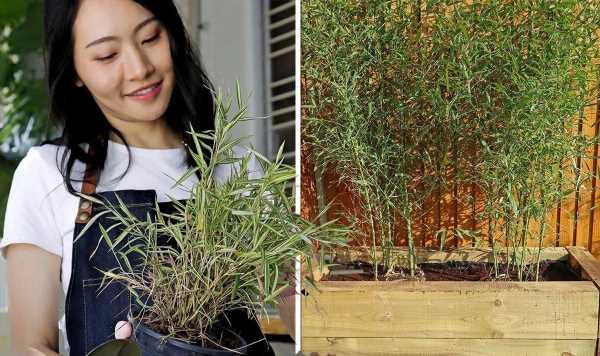Gardener explains types of bamboo and how to grow it safely
We use your sign-up to provide content in ways you’ve consented to and to improve our understanding of you. This may include adverts from us and 3rd parties based on our understanding. You can unsubscribe at any time. More info
Bamboo is native to tropical and temperate climates such as those in Asia and South America, though some varieties can grow surprisingly well here in the UK. The attractive foliage and striking canes are low maintenance, making them perfect for filling a large space, with minimal upkeep required. According to Genna Lorainne, professional horticulturist and plant expert at Fantastic Services, this versatile plant can be grown in “many different situations” – and this is how to keep it thriving year after year.
How to grow bamboo successfully
While bamboo is not hard to grow, there are a few things you need to get right to ensure that your plant is in optimum condition.
Choose the right planting site
Growing your own impressive display of canes is not too hard as the plant will tolerate most soil types, but loamy, well-drained soil in a sheltered spot is best.
This makes the tall, leafy growth ideal for growing either as a focal point, or as a screen to block an unsightly view from your garden.


Speaking exclusively to Express.co.uk Genna Lorainne, professional horticulturist and plant expert at Fantastic Services said: “Plant it at the back of a border, along a fence line, or in any other spot where you need an attractive, low-maintenance plant.
“Some compact varieties do well in large pots, while other “running bamboos” are best grown in a container to prevent them from getting too big and growing and spreading out of control.”
Most bamboos will not be adversely affected if they are planted almost back-to-back if an instant screen is desired.

Plant it at the right time
Bamboos can be planted all year round, but it is best to wait until spring in areas with cold winters.
Planting it at the right time is crucial to keep the plant growing well, and more importantly, help it produce new canes in the warmer months.
According to Genna, spring is the best time for planting as it leaves the plant enough time to become established before the first winter.
She said: “Bamboos are not fully cold-hardy when first planted, and planting in spring allows the plant to get established and develop its cold-hardiness before the next cold season.
“This way, the food reserves in the rhizome can fuel a fresh flush of canes over the summer.”
DON’T MISS:
Foxes ruining your garden? Gardening pros claim this free hack ‘works’ [REVEAL]
Mum’s ingenious method to eradicate weeds using old compost [INSIGHT]
How to grow perfect rhubarb: Mark Lane’s expert guide – scatter manure [ANALYSIS]

Allow plenty of space for the plant to grow
After you have chosen a location for your plant, it’s time to transplant the young, potted bamboo into the soil bed, or new pot.
Genna recommended creating a hole that is just slightly bigger than the pot the plant is currently in.
Once you have the dug the hole, you should:
- Place the plant in the hole at the same level it was in the pot and fill it around it with dirt
- Pack down the dirt as you go to eliminate any air bubbles
- Water the area thoroughly once the plant is securely in the ground
Genna said: “To create a dense screen of foliage, space mature plants one metre apart.
“If you don’t mind waiting longer for them to fill in the gaps, fast-growing varieties can be planted slightly further apart.”
Water, feed and mulch
While bamboo canes are fast-growing, the way you care for the plant will change as the years go by.
Genna explained that the plant should be kept “moist, not waterlogged” for the first year, and that fertiliser should only be used after the first six months have passed after planting.
She said: “The plants have been given all the nutrients they need at the nursery, and adding more fertiliser could actually harm them.”
Mulching is also beneficial for the hard, hollow stems, so try adding a layer or bark around the base of the plant to ensure healthy growth.
Bark mulching is a particularly effective way to improve water retention and protect smaller bamboo plants from overexposure to the hot sun.
Source: Read Full Article
